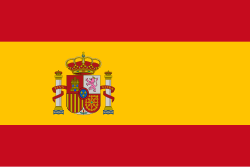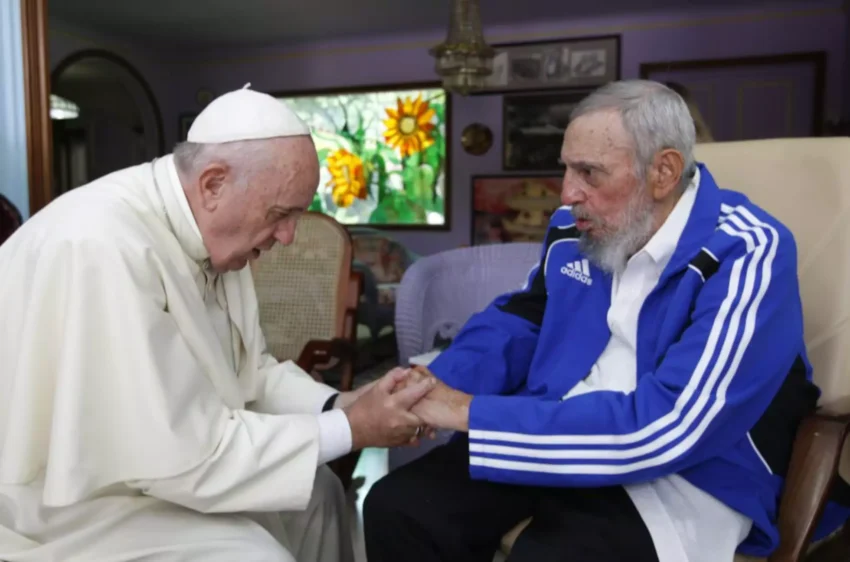Cuban President Miguel Diaz-Canel Bermudez wished Pope Francis recovers fast from bronchitis, who was hospitalized this Saturday to continue with medical treatment.
The president reiterated in X the appreciation he feels for the Supreme Pontiff and conveyed on behalf of the people of the Caribbean island the wish for a speedy recovery.
The Holy See reported this morning that the highest authority of the Catholic Church entered the Agostino Gemelli Polyclinic to continue “his treatment against bronchitis in a hospital environment.”
With information from Prensa Latina
Biography of the Holy Father Francis
Jorge Mario Bergoglio, elected Supreme Pontiff on March 13, 2013, was born in the Argentine capital on December 17, 1936, son of Piedmontese emigrants.
He graduated as a chemical technician and then chose the path of the priesthood, entering the diocesan seminary of Villa Devoto. On March 11, 1958 he joined the novitiate of the Society of Jesus. He completed his humanities studies in Chile and in 1963, upon returning to Argentina, he graduated in philosophy from the Colegio San Jose, in San Miguel. Between 1964 and 1965 he was a professor of literature and psychology at the Colegio de la Inmaculada in Santa Fe and in 1966 he taught the same subjects at the Colegio del Salvador in Buenos Aires. From 1967 to 1970 he studied theology at Colegio San Jose and obtained a bachelor’s degree.
On December 13, 1969, he received priestly ordination from the hands of Archbishop Ramón José Castellano. He continued his preparation in the Company from 1970 to 1971 in Alcalá de Henares (Spain), and on April 22, 1973 he made his perpetual profession. Back in Argentina, he was master of novices at Villa Barilari in San Miguel, professor at the theology faculty, consultant to the province of the Society of Jesus and also rector of the College.
On July 31, 1973, he was elected provincial of the Jesuits of Argentina, a task he carried out for six years. Later he resumed work in the university field and between 1980 and 1986 he was again rector of the San José school, as well as parish priest in San Miguel. In March 1986 he moved to Germany to finish his doctoral thesis; Later, the superiors sent him to the Colegio del Salvador in Buenos Aires and then to the church of the Company in the city of Córdoba, as spiritual director and confessor.
It is Cardinal Antonio Quarracino who calls him as his close collaborator in Buenos Aires. Thus, on May 20, 1992, John Paul II named him titular bishop of Auca and auxiliary of Buenos Aires. On June 27, he received episcopal ordination from the cardinal in the cathedral. As a motto he chooses Miserando atque choosing “he looked at him with mercy and chose him” and the shield includes the IHS Christogram, symbol of the Society of Jesus.
On June 3, 1997, he was promoted as coadjutor archbishop of Buenos Aires. Within nine months, after the death of Cardinal Quarracino, he succeeded him, on February 28, 1998, as archbishop, primate of Argentina. On the following November 6, he was also named Ordinary for the faithful of the Eastern rite residing in the country and lacking an Ordinary of the rite itself.
Three years later, in the Consistory of February 21, 2001, Saint John Paul II created him a cardinal, assigning him the title of Saint Robert Bellarmine. Until the beginning of the vacant see, he was a member of the Congregations for divine worship and the discipline of the sacraments, for the clergy, for the institutes of consecrated life and the societies of apostolic life; of the Pontifical Council for the Family and the Pontifical Commission for Latin America.
Translated by Radio Angulo
- Cuba Adopts Winter Time on November 2nd - 1 de November de 2025
- Venezuela Sends Humanitarian Aid to Cuba and Jamaica - 1 de November de 2025
- Cuba clarifies alleged offer of aid from the U.S. - 1 de November de 2025

